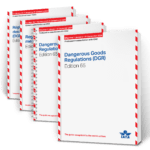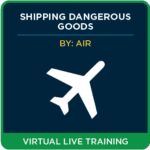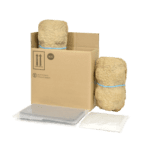IATA Guidelines: Samples Section 3.11
In the intricate world of air transportation, the safe shipment of samples for further testing is of paramount importance. IATA‘s Section 3.11 provides crucial guidelines for the classification, proper shipping names, and limitations when transporting samples. Let’s delve into the key provisions outlined in this section to ensure the secure handling of substances en route to further testing.
Classification of Uncertain Hazard:
When the hazard class of a substance is uncertain, IATA Section 3.11.1 mandates the assignment of a tentative hazard class, proper shipping name, and UN number. Shippers must rely on their knowledge of the substance, applying classification criteria and considering the precedence of hazards outlined in Subsection 3.10. The most severe packing group associated with the proper shipping name chosen must be utilized.
Proper Shipping Name and the Term “Sample”:
In adherence to IATA Section 3.11.2, the proper shipping name must be supplemented with the term “sample” (e.g., Flammable liquid, n.o.s., sample). However, for specific cases where a proper shipping name is designated for a sample meeting certain classification criterion (e.g., Gas sample, non-pressurized, flammable, UN 3167), that particular proper shipping name must be used. When employing an n.o.s. entry, the proper shipping name need not be supplemented with the technical name.
Limitations for Sample Transportation:
IATA Section 3.11.3 sets forth stringent limitations for transporting samples:
(a) The substance must not be forbidden for transport according to 2.1.1.
(b) The substance must not meet the criteria for Class 1 or be considered an infectious substance or radioactive material.
(c) Compliance with 3.4.1.2.5 or 3.5.2.6 is required if the substance is a self-reactive substance or an organic peroxide, respectively.
(d) Samples must be transported in a combination packaging, with a net weight per package not exceeding 2.5 kg.
(e) The sample should not be packed together with other goods.
Adhering to the guidelines within IATA’s Section 3.11 ensures a systematic and secure approach to transporting samples for further testing. As the aviation industry evolves, these regulations play a crucial role in safeguarding not only the cargo but also the individuals involved in the transportation process. By understanding and implementing these provisions, stakeholders contribute to a safer and more reliable air transportation network for samples destined for further testing.
ICC Compliance Center has a team of full-time Regulatory Experts who have years of experience and are certified/recognized in their field of expertise. Ask us your tough questions by calling 888.442.9628 (USA) or 888.977.4834 (Canada) or send us an email.
Stay up to date and sign up for our newsletter!
We have all the products, services and training you need to ensure your staff is properly trained and informed.
 IATA Dangerous IATA DangerousGoods Regulations |
 Shipping Dangerous Goods Shipping Dangerous Goodsby Air Virtual Live Training |
 4GV Securepacc 4GV SecurepaccComplete Shipping Kit |






